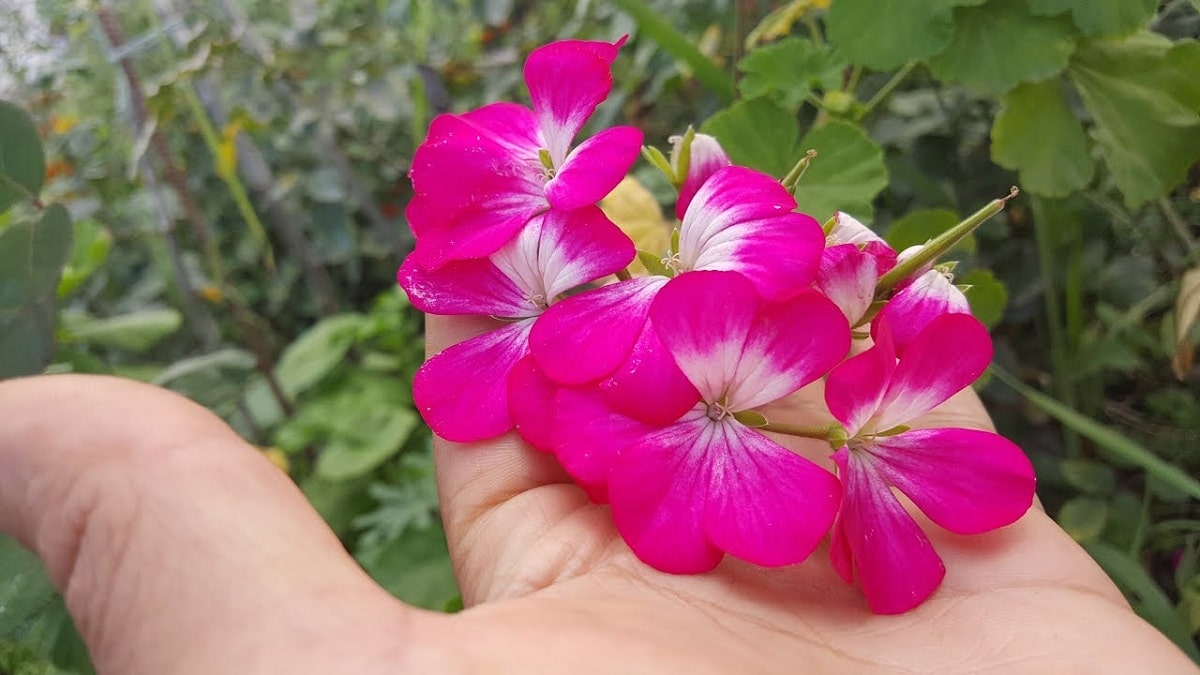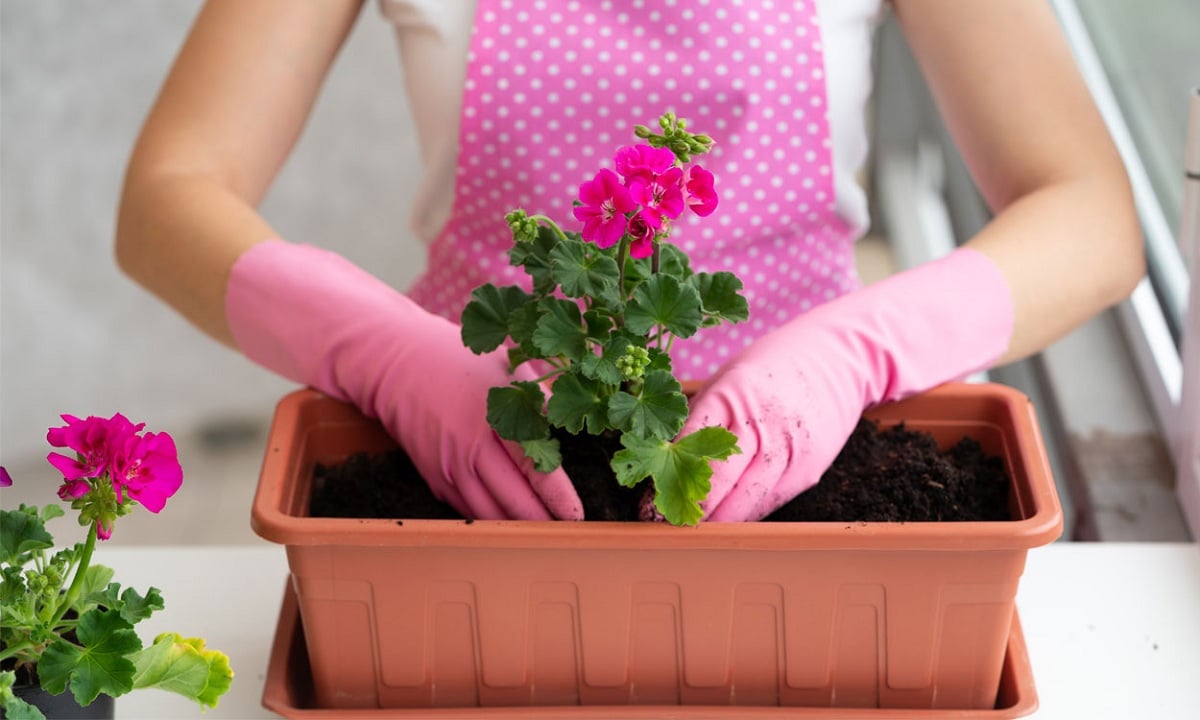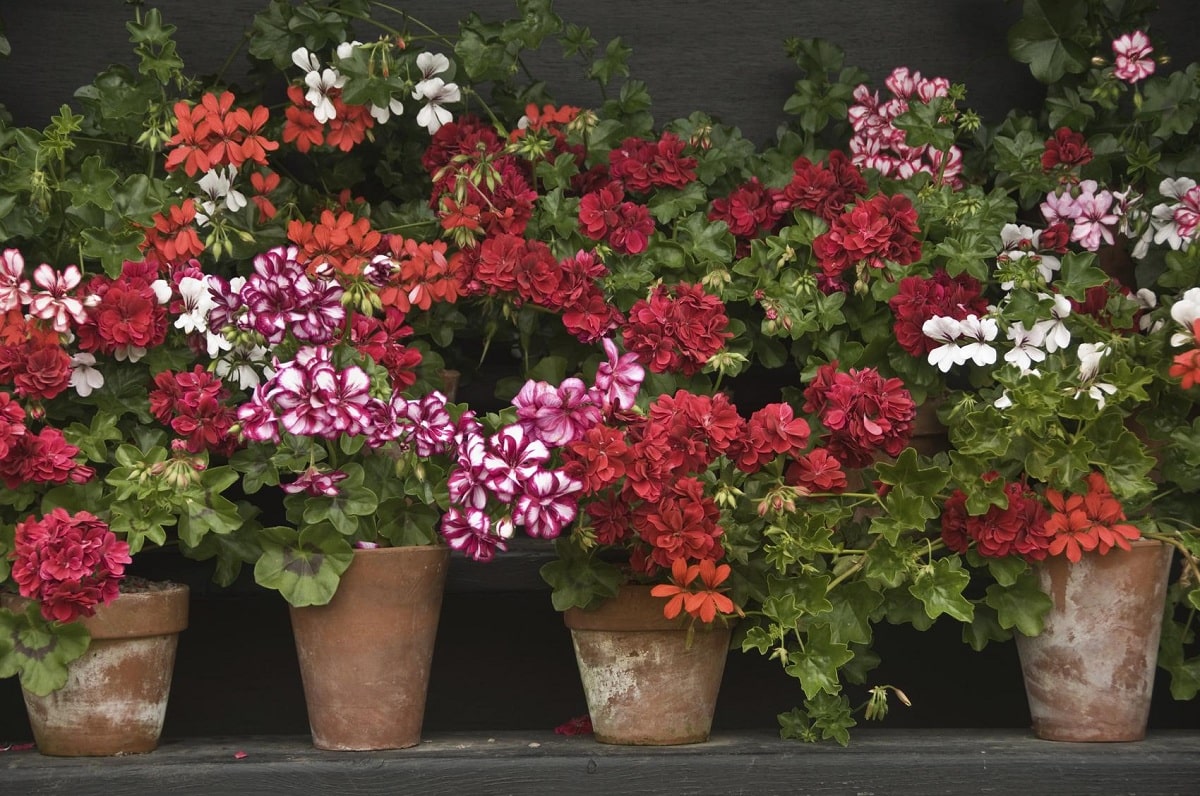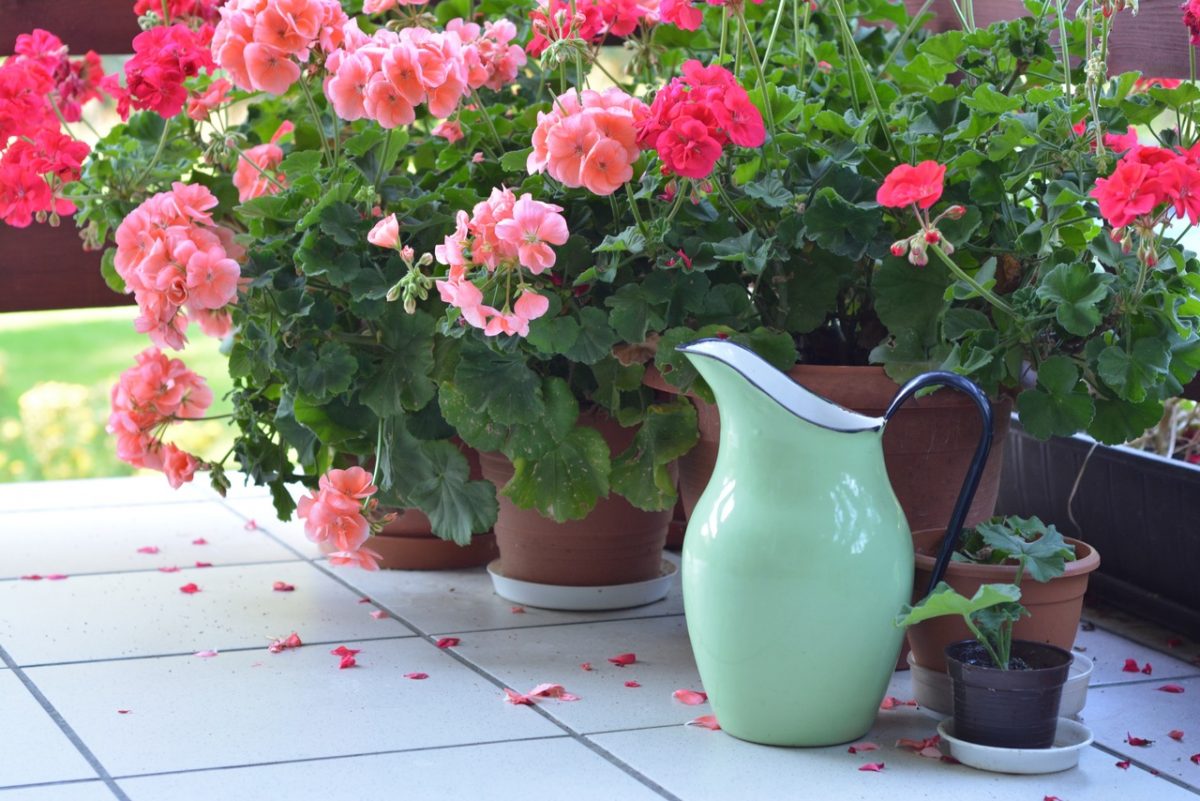
Geraniums are quite decorative plants widely used both indoors and outdoors. It can be sown from seed by cuttings. Many people don't know how to plant a geranium from seeds or what care it requires for its correct growth and development.
In this article we are going to tell you how to plant a geranium step by step and what aspects you should take into account for its subsequent care.
When to plant geraniums

Geraniums are one of the most common plants in the garden. For the same reason, they are the best known. This may be because geraniums are very noble plants that are not difficult to grow and require little maintenance. In summer, geraniums can be found everywhere, whether in the garden, or on balconies and windows, they adorn the landscape with their color and scent.
Because geraniums have such a wide variety among their different types, it is important to understand the geraniums we are growing so we know when they are best to plant, as these plants flower from spring to fall depending on the species and variety. If you are not very clear, the best thing to do is plant your geraniums in mid-spring, when the frosts have passed and will not damage your plants.
How to plant a geranium from seed

The ideal thing for us to plant geraniums is to first plant the seeds in a small seedbed or pot to ensure that the germination process takes place in optimal conditions and that we do not expose the seeds to frost. To grow geraniums, follow these steps:
- Prepare your seedbed with geranium substrate and plant seeds. The substrate must be earthworm humus, peat and coconut fibers, with a little vermiculite and perlite. This mix will produce a very light, nutrient-rich soil with excellent drainage, so as long as the container has drainage holes, the problem of moisture build-up can be avoided.
- Water the seeds abundantly, place them in a sheltered area and give them a bright place.
- When the seedlings are about 10 cm tall, can be transplanted to their final location, either outdoors or in larger pots.
- Outdoors you have to take into account the soil that geraniums need, so it is best to dig a hole in the prepared substrate to prepare an area, if it is not clay, you can add worm humus to the soil and make it light and loose enough. Geranium holes do not need to be huge, but it is important that you find them in as bright a spot as possible, preferably in a sunny spot.
- potted, the size of the geranium pots depends a lot on the variety or species to be planted, as they also vary greatly in size. If you don't know what variety you are going to plant, choose a medium pot, if you grow a lot, transplanting is enough.
- Water abundantly after planting, Mulch the soil well if you are planting outdoors and you may need stakes or rails to support the plant as it grows.
Necessary requirements

It should have at least 6 hours of direct light per day. Geranium tolerates partial shade and shade, but will not do as well as full sun exposure, as light intensity directly affects flowering.
The optimum temperature is between 15 and 20 ºC. Temperatures below 12ºC and above 28ºC will reduce plant growth. Irrigation should be continued in moderation, since excess water can cause various diseases. It should be increased during the warmer seasons, which are enough to keep the soil moist. In fall and winter, allow the top layer to dry out a bit.
They require a loose substrate with good drainage. For example, a good substrate can consist of peat, sand and clay. If we plant them in pots, it is important that they are not too large, as this can stimulate root growth and damage the aerial parts. The pH must be between 6,0 and 7,0, calcium improvers can be added.
How to plant a geranium with seedlings step by step
Pull out weeds and residue from previous crops and various residues to make sure your geraniums develop properly. Use a plow or rake to loosen the soil up to about 30 cm.
The soil must be moistened and fertilized before planting. This reduces the risk of hydraulically dislodging the seeds. Fertilize the soil and add about 5 or 10 cm of compost to provide as many nutrients as possible. Digging a hole geraniums grow best if they are grown from seedlings. Dig a hole large enough and deep enough for the geranium root ball to grow comfortably and roots to develop. It should be at least twice the size of the root ball.
Place the seedlings in the dug hole, being careful not to let the root ball split open or splinter. Check that there are no roots outside the hole. Likewise, to prevent disease, keep the soil from covering the stems.
For regular and medium varieties, you should leave 15 to 60 cm between one plant and the other. If you choose large varieties, you should leave at least 60 cm of space between each plant so that they can develop well. It transplants best on a cool, windless day.
It is important to fertilize the soil frequently. Fertilize in spring by spreading a layer of fresh compost around the geraniums. Add 5 cm of peat moss or mulch to keep the soil moist and prevent weed growth.
How to transplant it
Geraniums, especially potted geraniums, may require occasional transplants when they have outgrown their current space. Nevertheless, they are not plants that need to be transplanted annually, so to know when our geranium needs a larger container, you should check if its roots escape through the drainage holes of the pot, or if its growth has slowed down a lot. We have carried it for more than two or three years.
It is always best to do it in early or late winter, as the plants will be dormant and less affected by minor branch or root damage that often occurs during transplanting. As always, in addition to watering after transplanting, it is important to choose a new pot with drainage holes and to use a new suitable substrate.
I hope that with this information you can learn more about how to plant a geranium and what care it needs.